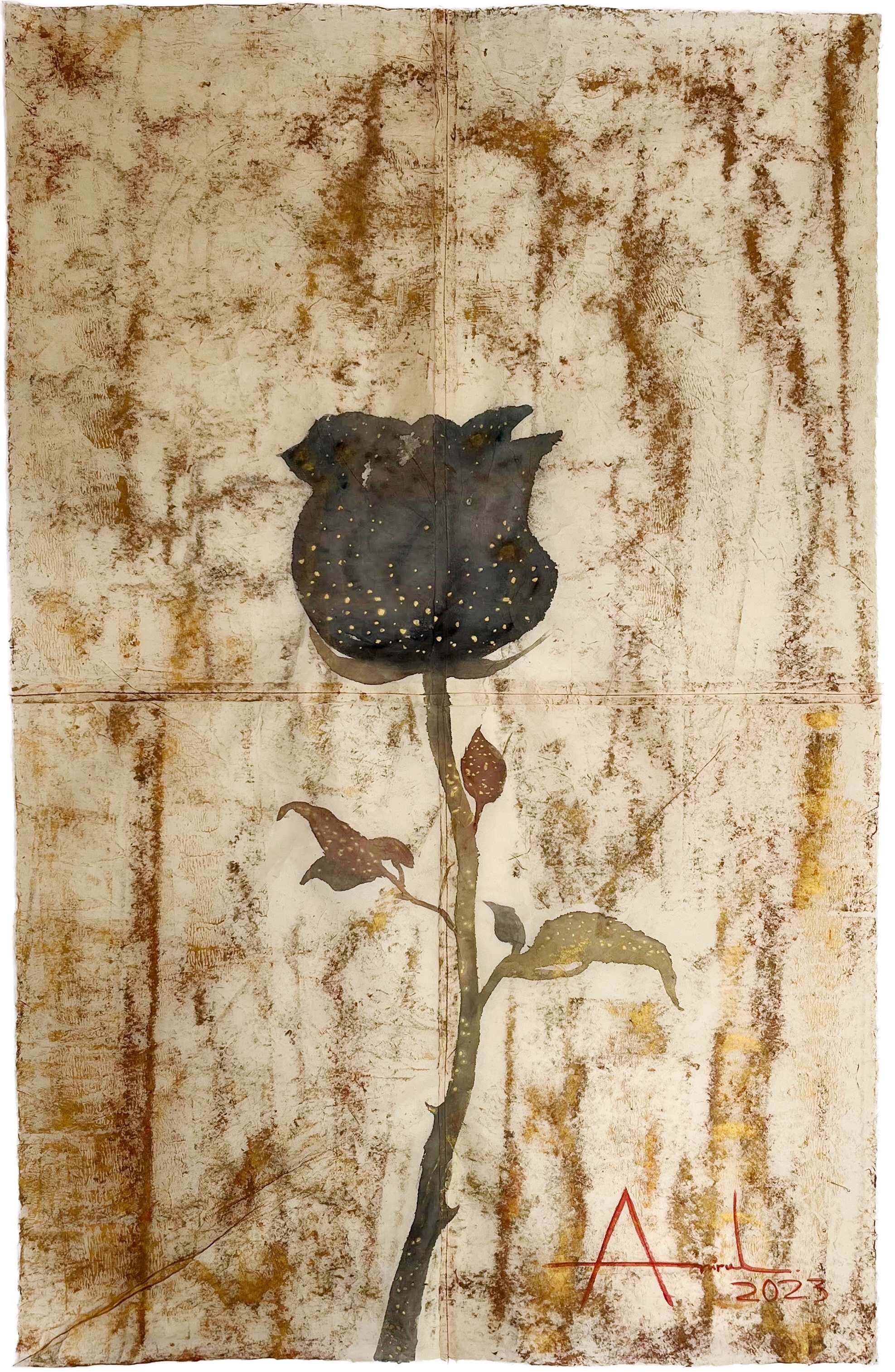Md. Anirul Islam at India International Centre (IIC)
By Terrain.art | · 10 -15 mins
Terrain.art is proud to support Md. Anirul Islam for his new Solo Exhibition - Coexistence of Past and Present, organised by India International Centre (IIC).
Md. Anirul Islam’s (b. 1986) creations are visual pieces with intricate narratives with each work unfolding a unique story drawn from a myriad of sources including people, memories, nature, and mythology. His artworks are a reflection of his profound connection to his roots, his keen observation of the world around him, and his unwavering commitment to storytelling through art. This aspect adds depth to his work, inviting viewers to engage both emotionally and intellectually with the art.
Step into Anirul’s creative world and explore his works at IIC from 25th April - 1st May, 2025.
Davangi: How did you come up with the idea of working with fabrics?
Sapna: My idea of working with fabrics grew organically from my upbringing and
experiences. I was introduced to the art of sewing and crochet during my
childhood, as my mother and grandmother skillfully created quilts, mattresses,
and decorative pieces. These early encounters ignited my fascination with
textiles and their potential for creative expression. Later, during my Master's
degree, I began exploring textiles as an artistic medium, inspired by the
children in observation and juvenile homes who struggled with conventional art
tools. Fabrics became a way for me to tell visual stories, drawing from both the
rich tradition of Indian textiles and my personal connection to sustainability.
Davangi: Can you describe the production process behind creating your fabric and
thread works on paper?
Sapna: My process begins with sourcing waste fabrics from tailors, designers, and local
shops. Each piece of fabric carries its unique character, and I carefully select
them for their texture, color, and cultural resonance. The journey from raw
material to finished artwork involves cut-and-paste techniques, intricate
stitching, and layering. These methods allow me to weave stories through the
interplay of fabrics, combining representational themes with abstract patterns.
Each work emerges as a sustainable piece of art, blending the spontaneity of
found materials with the discipline of detailed craftsmanship.
Davangi: What criteria guide your selection of fabrics for these works?
Sapna: The fabrics I choose are guided by their texture, bold colors, and ability to
evoke emotion or convey meaning. I often lean toward ethnic patterns and
botanical textures, reflecting my deep connection to nature and the cultural
heritage of Madhubani. Sustainability plays a significant role; I work exclusively
with discarded or overlooked materials, giving them a second life. Each fabric
tells its own story, which I integrate into my work to enhance its narrative and
thematic depth.
Davangi: Your approach to canvas work differs from that of fabric-based pieces.
Could you share some insights on this distinction?
Sapna: While my fabric-based works are rooted in material exploration and
sustainability, my canvas work is more painterly and traditional. On
canvas, I often incorporate botanical textures and explore themes of
memory, aging, and social narratives through bold colors and
representational forms. The fabric-based pieces rely on physical
manipulation, stitching, and layering, creating a tactile, multidimensional
experience. In contrast, my canvas work focuses on fluidity and
composition, blending the abstract and representational in a way that
complements my fabric art.
Davangi: Your approach to canvas work differs from that of fabric-based pieces.
Could you share some insights on this distinction?
Click here to view Sapna's Online Viewing Room and learn more about her practice.
Sapna: While my fabric-based works are rooted in material exploration and
sustainability, my canvas work is more painterly and traditional. On
canvas, I often incorporate botanical textures and explore themes of
memory, aging, and social narratives through bold colors and
representational forms. The fabric-based pieces rely on physical
manipulation, stitching, and layering, creating a tactile, multidimensional
experience. In contrast, my canvas work focuses on fluidity and
composition, blending the abstract and representational in a way that
complements my fabric art.


